How Does Youtube Blogger Make Money
Every day, over one billion YouTube videos are watched around the world. And they're not just being watched -- they're being devoured. In fact, the average YouTube mobile viewing session by any one viewer is roughly 40 minutes. If only there was a way to make money off of a website people spend so much time on ... As a matter of fact, there is! A few ways, actually, and the proof is in the people (and businesses) who've cashed in on their video strategy. Who's making content worthy of a nearly hour-long visit to YouTube? Well, YouTube isn't just for amateur filmmakers and people videotaping their zainy housepets anymore. Musicians, TV networks, small businesses, and the self-employed all find monetary value in posting their own amazing content on a YouTube channel. An active, entertaining YouTube channel -- which is free to make through a Google+ account (also free) -- strengthens these users' brands and extends their reach to new audiences. It can also build a base of subscribers that other companies using YouTube will actually pay to advertise their products to. Before launching a YouTube channel for the purposes of making money, you need to decide what kind of profit you're interested in. Are you looking to use YouTube as a promotional outlet for your own products and services? Or, do you want your video content to generate ad revenue right from YouTube? Here, we'll dive into the step-by-step process you'll need to follow to set up a YouTube account that is both ready and optimized for monetization. After that, we'll dive into some specific methods you can try to make money on YouTube — and examples of successful brands who've tried those same strategies. Feel free to skip directly to the section Different Ways to Earn Money on YouTube. Otherwise, let's dive in. To begin earning money on YouTube, you'll need to start with an AdSense account. An AdSense account is the platform in which you'll receive payments from YouTube, so this is a critical step. It's important to note — you can monetize more than one YouTube channel with the same AdSense account, so if your brand has multiple YouTube accounts and you're hoping to set up monetization features on each one, you only need one AdSense account. To set up an AdSense account, simply follow these AdSense instructions, or go to https://www.google.com/adsense/start/ and click "Sign up now". Once you've done that, proceed to the next steps. Along with an adSense account, you now need to be accepted into the YouTube Partner Program (YPP). There are a few requirements for joining YPP, including: If you meet all those requirements, you're eligible to sign up for the YouTube Partner Program. Here's how to sign up: Once you've completed these steps, you'll be placed in a queue to be reviewed. You can check your application status here at anytime. Once you've been accepted, you can proceed to the next step. Note: If you're accepted into the YPP, take a look a FAQs from creators who've just joined the program. If you've been rejected, take a look at these FAQs for tips on how to strengthen your application. You can re-apply 30 days after rejection. To create a strong, effective monetization strategy on YouTube, you'll need to know who your target audience is — and, just as importantly, who your buyer personas are. While your buyer persona will undoubtedly look similar to the same buyer persona you use for other marketing materials, there are slight variations you might need to make for the YouTube-version of your buyer persona. As Nelson Chacon, HubSpot's Principal Content Strategist for YouTube, told me: "For instance, you might have two buyer personas: Margaret and Sam. However, on YouTube, you have a better opportunity of reaching Sam than Margaret." Chacon continues: "Sam is interested in personal growth and probably has some existing tasks from Margaret on finding ways to reduce costs or find efficiencies for their business. The Sam we see outside of YouTube can have certain things he likes. However, inside of YouTube, he probably has other interests, so for this, you might look into creating a YouTube Sam 2.0 persona." "Ultimately, you'll want to tailor your digital content towards your 'YouTube 2.0' buyer persona. Consider what types of content that buyer persona would be most interested in, watch more, like and comment on, and share with peers. This will help you increase chances of conversion on YouTube." Ultimately, YouTube is a search engine, so you'll want to treat the platform similarly to how you'd treat any other search engine. This means, by identifying your buyer persona, you can begin to target keywords that appeal most to that persona — and ensure you're avoiding content that attracts "negative" personas, or people you don't believe would be a good match for your brand. (To learn more about how to create buyer personas, take a look at this post.) If you want to make money on YouTube, you'll want to establish a strong conversion path — i.e. which YouTube content will attract the most viewers, and of those pieces of content, how can you leverage conversion opportunities to turn leads into customers? We've identified 8 types of CTAs you can consider using in your YouTube videos. Among those are beginning-of-the-video CTA, description CTA, and drive-to-website CTA. Ultimately, you'll want to outline a clear conversion path to understand how to turn your YouTube visitors into product leads. For instance, let's say you want to use YouTube as a channel to drive leads to your company's new email marketing software. For starters, you'll want to create a compelling YouTube video that attracts your email marketing buyer persona, and then you'll want to drive those viewers to a dedicated landing page or e-book to learn more about email marketing. Once those leads are further down the pipeline, you can introduce them to your product. Your conversion path, then, will look similar to strategies you've outlined in other lead generation channels, such as blog posts and social media — however, you'll want to ensure you're tailoring the content you produce on YouTube to YouTube's demographic and the type of content YouTube viewers enjoy the most. This might look slightly different from the content that performs well on your blog, but it's worth the extra effort to ensure you're creating content that fits each platform's strengths. There are tons of strategies specific to optimizing your YouTube account for SEO — which can ultimately lead to more visitors, and an increase in revenue. A few quick tips: Consider inserting your intended keyword in your video title; optimize your video description; tag your video with popular keywords that relate to your topic; upload a customer thumbnail image; and add End Screens to increase your YouTube channel's viewership. It's important to remember, when making money on YouTube, you want to play the long game. Sure, SEO-optimization may not put money in your pocket tomorrow, but it's a good opportunity to increase viewership, establish your brand as an influencer in the space, and ultimately have the leverage needed to turn those thousands of viewers into paying customers. There are a variety of monetization features you might explore on YouTube. Ultimately, you'll want to choose the path that best suits your business' goals. Take a look at these five YouTube features in particular on which you can make money: Learn more about these features, and each feature's eligibility requirements, on this page. Additionally, let's dive deeper into advertising revenue for a moment. There are three separate advertising options on YouTube: TrueView ads, Video Discovery Ads, and In-Stream Ads. Ultimately, the ad option you choose will depend on your advertising goals. Ultimately, YouTube advertising can be one of the most effective opportunities for driving conversions for brands and influencers alike. Take a look at YouTube Ads for Beginners: How to Launch & Optimize a YouTube Video Advertising Campaign to learn more. One other opportunity to make money on YouTube comes in the form of sponsored content. If you're a YouTube influencer, you might naturally incorporate a brand or product mention into your content, create an entire video featuring a brand's product or service, or even include a brief shout-out to a brand with whom you've partnered. There are plenty of small and large opportunities to partner with brands and receive payment, either for every individual referral you send to their website, or simply for including a brand mention in your content at all. Best of all, you don't need to pay YouTube a portion of your earnings for any sponsorships — instead, you can negotiate directly with the brand. Alternatively, if you're a brand, this could be a good opportunity to reach new audiences and, ultimately, drive revenue to your company. Feel free to take a look at What Will Influencer Marketing Look Like in 2020? to learn more. Got a great story to tell that also has a connection to your product? TrueView is for you. TrueView ads are your opportunity to create high-quality, longer creative spots that appear adjacent to the YouTube videos your target audience is already watching. These ads come in two forms: In-Stream and Discovery. In-Stream videos play right before the YouTube user's selected video, "in the stream" of that chosen video. Users can opt to skip this video after five seconds of it playing, as shown below, and jump to their content. In-Stream ads can be between 12 seconds and six minutes in length. Discovery ads appear on the right sidebar of a selected video, just below the "Up Next" video as a suggested result. See how this one looks, below: Because of the time you're allotted with this ad format, it's suggested that you create this type of ad with the goal of views and brand development, rather than just clicks into your website. This ad ideally generates revenue from the long-term brand awareness that comes out of a story people don't want to skip, and one viewers remember the next time they approach your product or service. Both In-Stream and Discovery are pay-per-view -- you pay YouTube a fixed rate for every view the ad receives -- and their return on investment (ROI) can be measured in Google AdWords. YouTube tallies one new "view" after 30 seconds of watching, or a click on the video as it's playing. If the video is less than 30 seconds, views are tallied from people who watch the entire ad. (We'll explain how AdWords manages all three ad formats in a minute.) Clash Royale, a popular game app for mobile devices, has produced TrueView ads that are consistently in YouTube's top 10 most highly watched ads of the year. The company's 2017 ad, "The Last Second" (shown below), garnered more than 110 million views by the end of that year. This campaign contributed to a YouTube marketing strategy that makes the app developer no less than $4,000 per month, as estimated by SocialBlade. Like In-Stream ads, Preroll ads play in the stream immediately before a user's selected video. The difference is this ad type can't be skipped after five seconds. These videos also run a maximum of 30 seconds, though YouTube recently confirmed it will limit advertisers to 15- and 20-second options starting this year. Because viewing is required in this ad format, advertisers pay per click, so make the click worth it. A preroll ad with an enticing call-to-action that directs viewers to an appropriate landing or purchasing page on your website can be an enormous lead-generator for the sales team. You can also leverage YouTube's remarketing options, which enable you to send new videos back to users who've already engaged with your YouTube channel. If you're a HubSpot user, and you've built smart forms for capturing new information on returning visitors, remarketing can be a terrific addition to an inbound marketing campaign. This remarketing option helps you learn more about a person's background and interests when they receive new videos that bring them to new landing pages. Bumpers are the shortest ads you can buy. These six-second spots play just before a viewer's selected video (like the above two options) but are best for brand awareness in the short breaks between long videos, or a YouTube playlist a user might be listening to in the background. While they might be brief, YouTube found 90% of their bumper ads were remembered later by viewers. Bumpers are sold through cost-per-minute (CPM) bidding, which means you pay for every 1,000 plays of your ad on YouTube. They're best used as a compliment to a TrueView ad campaign. So how do you track the performance of these three video ad formats? Once you've created a YouTube channel and uploaded your video content, you can open a Google AdWords account and link it to your video campaign. In AdWords, select the campaign type, ad format, your budget, and to whom and where to show each video on YouTube. You can target very specific audiences, and track the conversion rate of each video individually to see how much business (and revenue) you're driving. See this blog post to learn more about this process. The YouTube Partner Program (YPP) allows the website's most successful YouTube channels to monetize their content by serving ads made and paid for by other YouTube users. The criteria for this program -- which changed in 2018 -- requires that your channel has reached 4,000 watch hours and 1,000 channel subscribers in the last 12 months. Once you have passed these two milestones, you can apply to join the program through the following steps: YouTube typically emails you a decision on whether they've accepted you into the YPP within a week of applying, so sit tight. Still trying to hit the right watch hours and channel subscribers? Keep in mind you should be posting prolifically -- having just one or two videos on your channel that you're personally proud of won't cut it. T-Series is a prime example of how volume and consistency can make you a sought-after channel by advertisers on YouTube. This India-based record company posts numerous music videos for songs written and performed in Bollywood, India. And although the company was founded in 1984 and has been on YouTube for nearly 10 years, keeping with this music video strategy has finally put them a position to dethrone PewDiePie (the famous video game-focused YouTube user) as the most popular YouTube channel in the world -- with a whopping 83 million subscribers. T-Series makes no less than $724 thousand per month from its YouTube channel, according to SocialBlade, much of which comes from advertisers through the YouTube Partner Program. "Bollywood music is like Russian roulette. You keep on betting, but you don't know what will be a hit." -Nerraj Kalyan, President of T-Series By publishing multiple videos a week, you can build your viewership, qualify for YPP, and make decent cash. YouTube splits ad revenue 55-45 with its partners -- 45% to Google, 55% to you. That means an advertiser who invests $200 in serving ads on your channel can bring you $110 for your videos' real estate. T-Series's president attributes their success on YouTube to the fact that the business doesn't go into any one project thinking it will make money. Rather, the regular "bets" they place on YouTube increase their chances of capturing its audience, and increasing their following as a result. As an affiliate, there is no eligibility requirement -- you're taking advertising into your own hands. This is a great option for YouTube channels that offer reviews and how-to's, and frequently recommend new products to its viewers. Turn those suggestions into paid (but natural) product placements in the description section of your video, as shown below: Working as an affiliate of various brands can make you money -- albeit usually less than a YouTube Partner campaign -- each time that company makes a sale off a link you post on one of your videos. In this case, you're earning revenue from the company of which you are an affiliate, rather than from YouTube and its advertisers. Start by joining an affiliate network through sites like Click Bank or Amazon's Affiliate Program, and follow the signup instructions. Keep in mind that each program takes a different percentage of a sale as commission, and your success is still tied to the popularity of your YouTube channel. Travel vloggers can also join Travelpayouts. It is a travel affiliate program, that allows you to make money on flight tickets, hotels, tours and other travel services. The affiliate commission (percentage) depends on the service you choose and your sales volume. YouTube personality Marques Brownlee, whose YouTube channel is shown promoting affiliate links in the screenshot above, is a consumer electronics reviewer on YouTube. This makes affiliate advertising the perfect revenue stream for his channel because his advertisers are effectively paying for Marques to review -- and, assuming it's a positive review, promote -- their products to his viewers. Marques says he also generates revenue through the YouTube Partner Program, according to Recode. "There's little things you can do to get people to watch your videos more, but none of it will make as drastic of a difference as the video itself. The video itself has to be what makes people watch it and share it and watch it again." -Marques Brownlee, tech reviewer on YouTube In the example above, Marques reviews a pair of headphones by Bose, suggesting they might be the best noise-cancelling headphones on the market. This made him an affiliate of Bose -- just one piece of a YouTube marketing strategy that makes Marques no less than $6,900 per month, according to SocialBlade. What exactly is fan-funding? It's exactly what it sounds like: viewers donate money to your channel if they find your content enjoyable. It's the perfect option for videos managed by charities and nonprofits, but even for-profit businesses and independent creatives can publish videos and YouTube Live streams that encourage contributions from their audience. Streaming platforms such as Twitch.tv, which webcasts video games and general interest content, sees accounts that are two years or older make $80 in "tips" per year on average. Twitch.tv's most popular users make thousands. Obviously YouTube and Twitch have different users, but YouTube has just as many loyal channel subscribers who would likely pay for exclusive rewards and content. On YouTube, sign up for Fan Funding to allow viewers of a live stream to tip through a chat window associated with the video. YouTube calls them Super Chats. You can also sign up for Patreon, which allows you to launch membership-only video channels through YouTube at a small fee per month for regular rewards. Just imagine how much a YouTube channel could generate if it has the 1,000 subscribers required by the YPP. Charge $1 for a new channel with new content, and you could be looking at a solid monthly revenue stream. If you're eligible, channel memberships is a powerful opportunity to offer exclusive perks to fans who are willing to pay a low monthly fee to become a member of your brand's YouTube channel. Channel memberships provide members with perks like loyalty badges, custom emojis, and other goods unique to the channel — for instance, comedian Mike Falzone offers a digital copy of his book and an exclusive coupon code to use on merchandise: Take a look at YouTube's Channel memberships eligibility, policies, & guidelines to see if this is a good fit for your brand. Ultimately, community membership could be a powerful opportunity for you to build a larger following on YouTube and make loyal fans feel valued by releasing exclusive, membership-only content. Similar to the power of a good gift shop at the end of a museum tour, the Merchandise Shelf is a good option for influencers and brands alike to sell products or services to spread brand awareness and increase sales. This is an especially good option for influencers. For instance, consider Ryan Higa, a Japanese American Youtube creator and personality, who has over 21 million subscribers on his YouTube channel. To earn money, Higa now has a full merchandise website he links to directly from his YouTube account. Devoted Higa fans will love purchasing a branded t-shirt or sweatshirt, and it earns Higa some hard-earned money on his already successful channel. Take a look at YouTube's merchandise page to learn more. There's no shortcut to well-earned cash money, even on YouTube. The good news is video is taking up an increasingly wide slice of global internet bandwidth, and there are numerous ways to produce video content that's good enough for people to pay for. ![Sign up for HubSpot Academy's YouTube for Marketers Course [Free Online Course]](https://no-cache.hubspot.com/cta/default/53/8c86a8cf-3857-41c3-b88d-f4d3b084b0cc.png)
How to Make Money on YouTube
1. Set up an adSense account.
2. Become a YouTube partner.
3. Identify viewer personas.
4. Establish a product conversion path.
5. Optimize your page for conversions.
6. Choose your monetization preferences.
7. Create sponsored content.
Different Ways to Make Money on YouTube
1. TrueView Ads
YouTube revenue: $2,600 – $41,600 per month
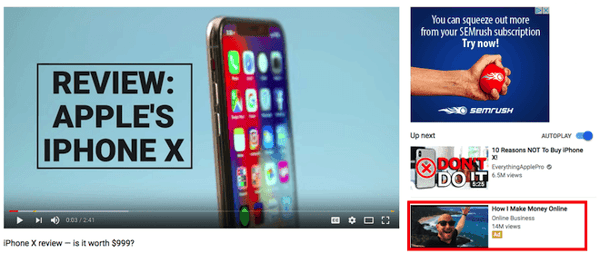
2. Preroll Ads
3. Bumper Ads
4. YouTube Partner Program
YouTube revenue: $723,500 – 11.6 million per month
5. Affiliate Links
YouTube revenue: $6,900 – $109,800 per month
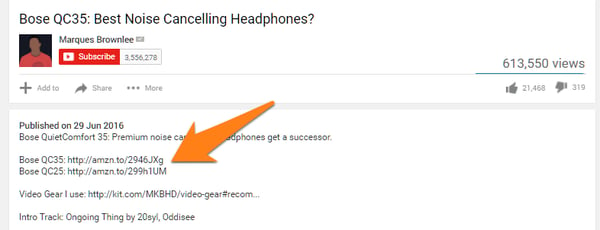 Image via Authority Hacker
Image via Authority Hacker
6. YouTube Super Chats and Super Stickers
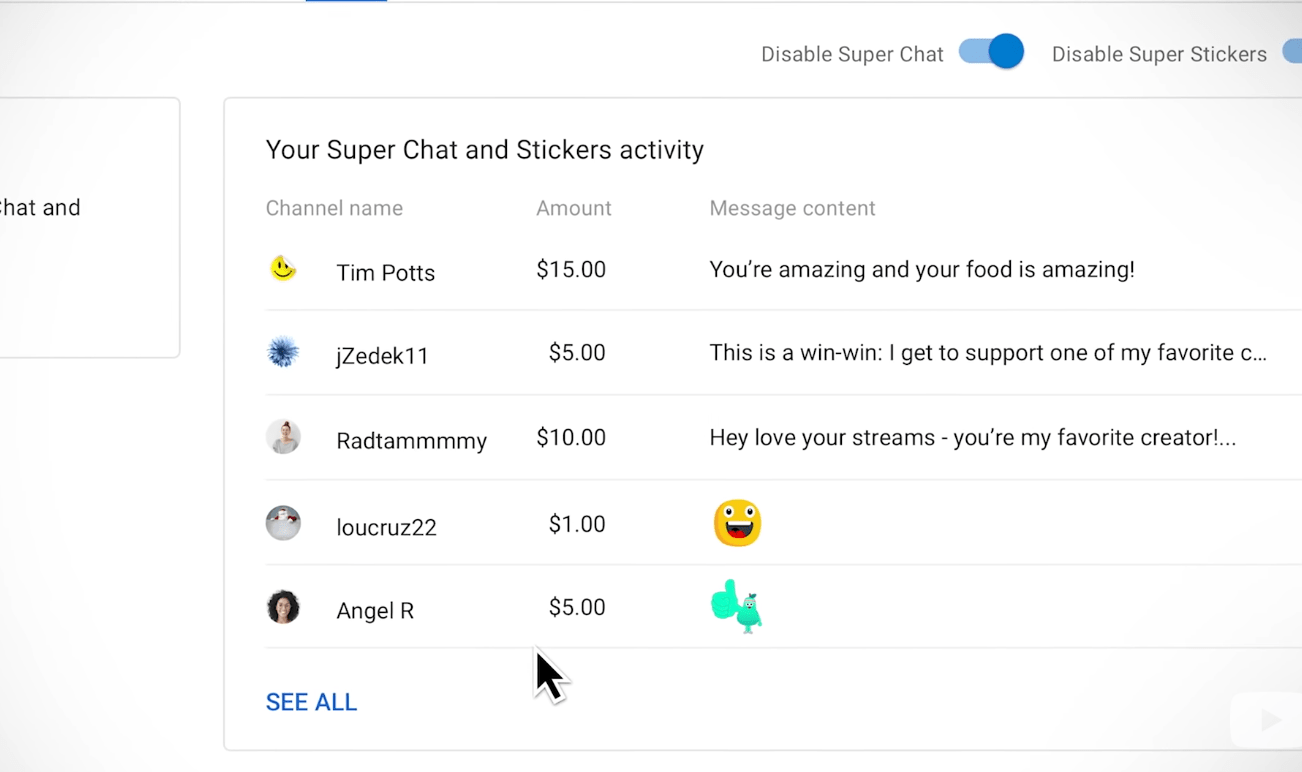 Image Source
Image Source 7. Channel Membership
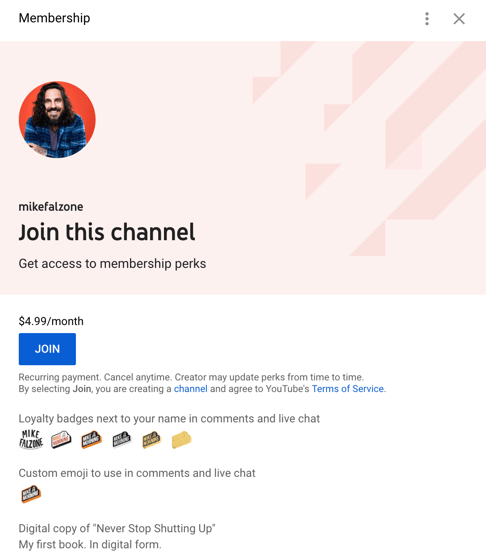
8. Merchandise Shelf
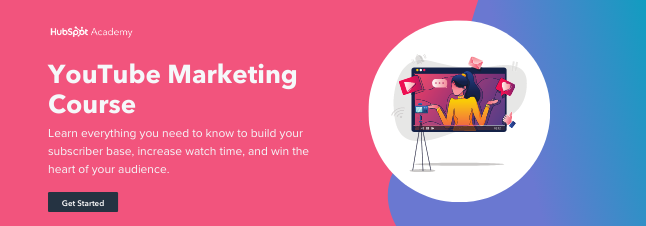

Originally published Nov 29, 2020 7:00:00 AM, updated April 12 2021
How Does Youtube Blogger Make Money
Source: https://blog.hubspot.com/marketing/how-to-make-money-on-youtube
Posted by: greenpoempon.blogspot.com

0 Response to "How Does Youtube Blogger Make Money"
Post a Comment